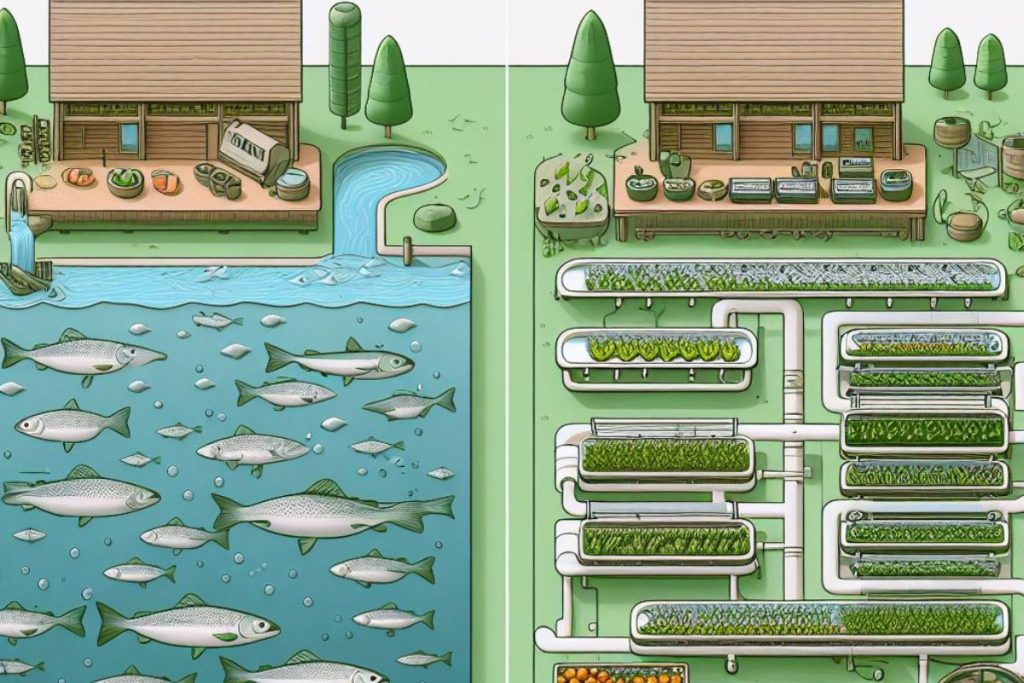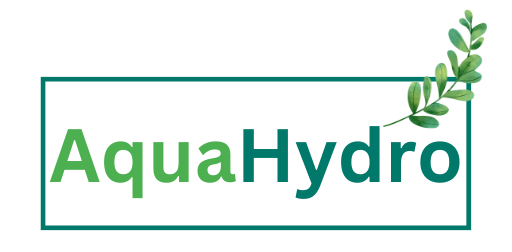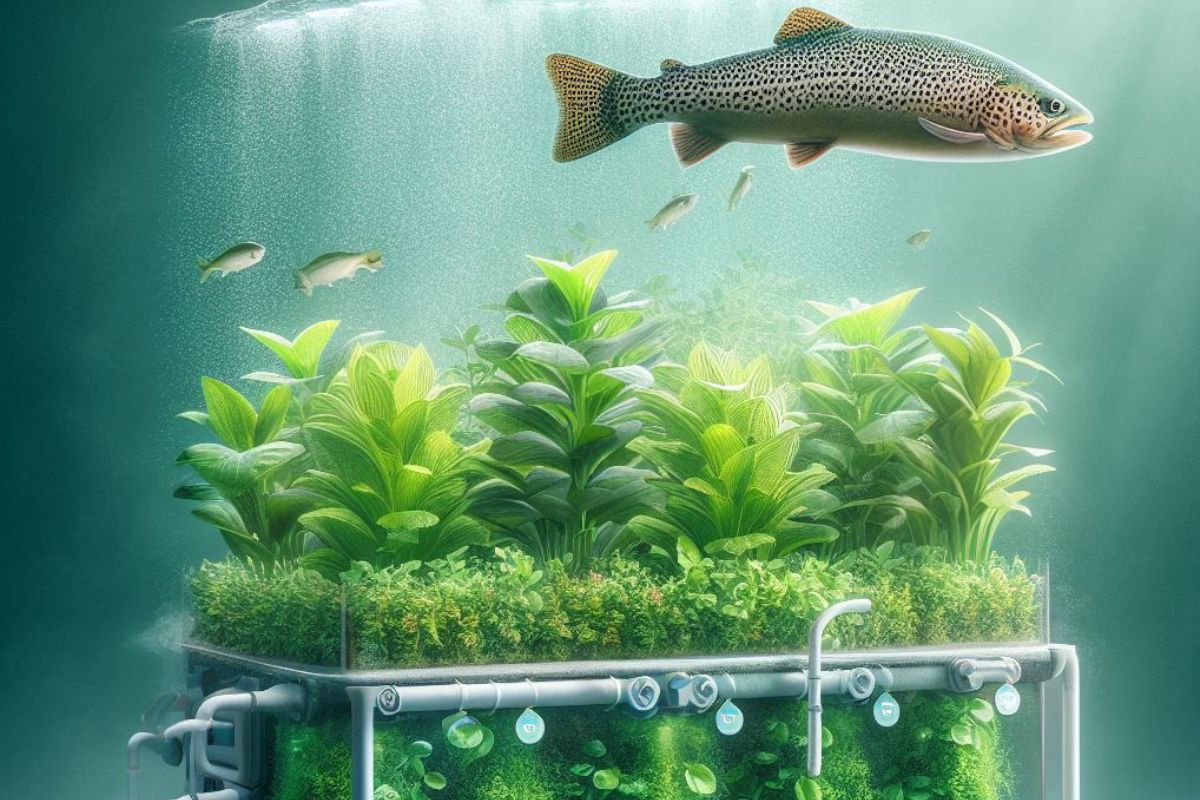Aquaponics, an ingenious fusion of aquaculture and hydroponics, has revolutionized sustainable farming practices in recent years. In this comprehensive guide, we delve into the world of trout aquaponics, exploring how this innovative method not only enhances your fish farming endeavors but also contributes to environmental conservation.
The Essence of Trout Aquaponics
Trout aquaponics is a cutting-edge farming technique that integrates the cultivation of freshwater trout with hydroponic plant growth. This symbiotic relationship between fish and plants creates a self-sustaining ecosystem that offers numerous benefits, both environmentally and economically.
Sustainable Fish Farming
Traditional fish farming often relies on large water bodies, which consume significant resources and can lead to pollution. Trout aquaponics, on the other hand, operates within closed systems, significantly reducing water usage and preventing contamination.

By harnessing this eco-friendly approach, you can actively contribute to conserving our planet’s precious water resources, a fact that sets trout aquaponics apart from conventional fish farming.
Nutrient-Rich Plants
In a trout aquaponics setup, the waste produced by the fish serves as an organic fertilizer for the hydroponically grown plants. This nutrient-rich water is then filtered and circulated back to the fish tanks. The result? Lush, healthy vegetation that thrives on the natural goodness provided by the fish.
The ability to grow a variety of vegetables, herbs, and even flowers in this manner not only ensures a steady supply of fresh produce but also adds an exciting dimension to your aquaculture venture.
Getting Started with Trout Aquaponics
Embarking on your trout aquaponics journey requires careful planning and execution. Here is a detailed, step-by-step guide to assist you in beginning your journey:
1. System Setup
The heart of trout aquaponics is a well-designed system. Begin by selecting an appropriate location, ensuring adequate space and access to sunlight. Key components of your system include:
- Fish Tanks: Choose durable, non-toxic tanks to house your trout. Ensure proper aeration and filtration systems to maintain water quality.
- Grow Beds: These hydroponic containers will hold your plants. Select high-quality grow media, such as clay pellets or gravel, to support plant growth.
- Water Pump: A reliable pump is essential for circulating water between the fish tanks and grow beds.
2. Fish Selection
Opt for species of trout that are well-suited to aquaponics, such as rainbow trout or brown trout. Ensure you source healthy fingerlings from reputable suppliers.
3. Plant Choices
Experiment with a variety of vegetables and herbs. Leafy greens like lettuce, kale, and spinach, along with herbs like basil and mint, thrive in aquaponic systems.
4. Water Quality Management
Maintaining optimal water conditions is crucial. Frequently check and keep an eye on water conditions such as pH, ammonia, nitrites, and nitrates. Make necessary adjustments for a harmonious ecosystem.
5. Feeding and Maintenance
Feed your trout a high-quality fish food suitable for their growth stage. Monitor their feeding habits and adjust rations accordingly. Regularly clean filters and remove any uneaten food or debris.
The Benefits of Trout Aquaponics
The advantages of trout aquaponics extend far beyond its sustainable nature. Let’s explore some of the key benefits:
1. High Productivity
Trout aquaponics systems can yield both fish and a variety of crops simultaneously, maximizing your output per square foot of space. This dual production not only diversifies your harvest but also boosts your farm’s overall productivity.
2. Eco-Friendly
By reusing water and minimizing waste, trout aquaponics reduces the ecological footprint of traditional farming methods. This eco-friendly approach aligns perfectly with the global push for sustainable agriculture.
3. Fresh, Healthy Food
Enjoy a constant supply of fresh, organic produce right from your aquaponics system. The absence of pesticides and herbicides makes your harvest not only delicious but also healthier for you and your family.
4. Profit Potential
As the demand for sustainable and locally sourced food continues to rise, it offers a unique business opportunity. Selling your fish and produce to local markets or restaurants can generate a steady income stream.
Troubleshooting Common Issues
While trout aquaponics is an efficient and sustainable farming method, it does come with its set of challenges. Here are some common issues you might encounter and how to address them:
1. Water Quality Fluctuations
Maintain regular water testing and adjust as necessary to ensure stable water quality. pH levels and ammonia/nitrate balance are critical factors to monitor.
2. Disease Management
Keep a close eye on your fish for signs of illness. Quarantine new fish before introducing them to your system, and follow good hygiene practices to minimize disease risk.
3. Plant Pests
Inspect your plants for any signs of pests or diseases. Implement organic pest control methods, such as introducing beneficial insects or using neem oil.
Trout aquaponics represents a sustainable and rewarding farming method that not only provides fresh, healthy food but also contributes to a cleaner, greener planet. By embracing this innovative approach, you can enjoy the benefits of high-yield farming while reducing your environmental impact.
If you’re ready to embark on your trout aquaponics journey, start by setting up a well-designed system, selecting the right fish and plants, and mastering the art of water quality management. With dedication and proper care, your trout aquaponics venture has the potential to flourish and thrive.

